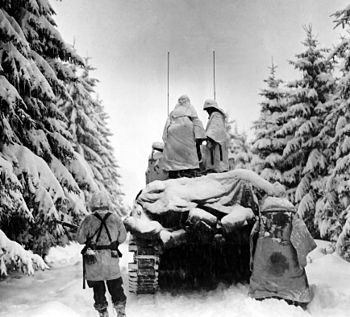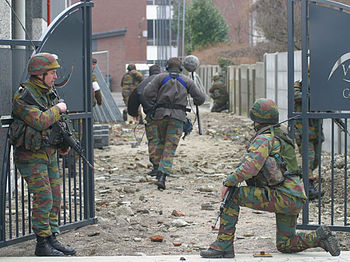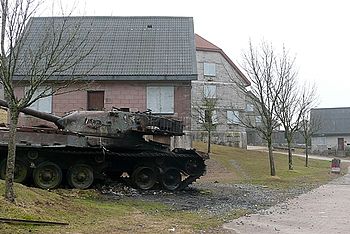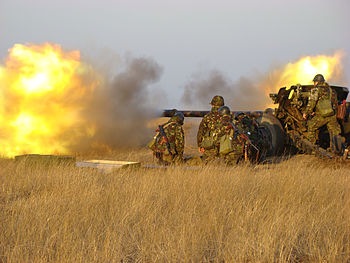This is the fifth and final part of my extended review of The Stress of Battle by David Rowland. It is such a strong piece of operational research on WW2 heroism that I thought that it would be useful for wargame designers (and players) to understand what the research evidence is for what went on in WW2 battles. This part is on the effects of heroism and combat degradation.
Combat degradation is a measure of how less effective weapon systems and individual soldiers are in actual combat when compared to training exercises and range work. A score of 1.0 is equivalent to not being degraded at all. Degradation to 0.3 would mean that it was operating at 30% of its peacetime range effectiveness.
- the analysis by Rowland’s team broadly matches that done by Wigram in 1943, that there are three classes of effectiveness.
- About 20% of those involved could be classed as heroes (26% for guns, 9% for tanks).
- Of the rest, one third were ineffective (either they didn’t engage, or what they did do didn’t have any significant impact) (27% of the total);
- The remaining two-thirds were about 30% effective (53% of the total);
- Weapon systems crewed with at least one hero were about five times more effective than those with no heroes;
- Overall effectiveness of a unit = 0.2+([Heroes/gun]*0.8)
- Leadership improves combat effectiveness (i.e. more officers/SNCOs present leads to greater effectiveness, which is the reason that tanks are less effective than gun crews).
 Rowland and his team compared the effectiveness of the most effective and the partly effective groups in both the historical battles for which there was information and also for the field trials conducted by the British Army in the 1970s & 1980s. What they found was that there was the same variability within the two groups, which was attributed to opportunities to engage. However there was a significant difference between the groups, which was attributed to heroes being more effective.
Rowland and his team compared the effectiveness of the most effective and the partly effective groups in both the historical battles for which there was information and also for the field trials conducted by the British Army in the 1970s & 1980s. What they found was that there was the same variability within the two groups, which was attributed to opportunities to engage. However there was a significant difference between the groups, which was attributed to heroes being more effective.
- Heroism seems to be a product of genetics, social conditioning and values. Many recipients of gallantry awards had previously been mentioned in despatches, or were decorated again.
- Comments on citations for subsequent decorations indicate that a second award always required a stronger case than the first award did.
- Heroes maintain their combat effectiveness in future battles, even if not further awarded.
- Heroism is more likely at higher ranks (i.e. officers and senior NCOs (Sergeants and above) are more likely to be in the higher performing groups than other ranks).
- Officers had 1.56 Awards/KIA
- SNCOs had 0.52 Awards/KIA
- Other Ranks had 0.10 Awards/KIA
- Rank may be an effect (promotion coming from heroic behaviour) or a cause (feeling responsible because of higher rank).
- Crews operate at the level of the highest effective person present.
Probabilities of Heroic Action being recognised
| Rank |
Infantry |
Guns |
| Senior Officers |
30.00% |
34.00% |
| Lieutenants |
6.10% |
4.20% |
| All Officers |
14.00%
|
14.00%
|
| Sergeants & Warrant Officers |
6.10% |
8.40% |
| Corporals / Bombardiers |
2.50% |
2.95% |
| Privates & Equivalent |
0.48% |
0.73% |
NB there is a possibility that the awarding of decorations was unfairly skewed by rank, and that those of lower rank that performed heroically weren’t adequately recognised.
Gurkhas
Gurkha units were noticably different from British unit, and appear to be 60% more effective in inflicting casualties on the enemy and 60% more likely to be decorated. This comes at the price of higher levels of casualties.
Surprise & Shock
The defintion of Surprise is “the achievement of the unexpected in timing, place or direction such that the enemy cannot react properly”. This is distinct from Shock, where soldiers could react, but didn’t.
Again historical analysis was used and battles where surprise and shock were involved were identified. These were then compared with other battles with similar characteristics so that only either Shock or Surprise were different. The two factors being compared individually with a reference set.
Surprise
- Attack surprise reduces infantry defence effectiveness by 60% at 3:1 attack ratio.
- Attack surprise may vary with force ratio (being more marked at low ratios and less effective at higher ratios)
- Surprise for tank vs tank reduces casualties  by a factor of 3 at 1:1 attack ratio for the side achieving surprise.
- Attacks below 1:1 ratio were successful 65% of the time when surprise was achieved, where attacks at these ratios were never successful without surprise
- At force ratios above 1:1 surprise is less important to success, although there is still higher levels of success with surprise, just not statistically significant.
- with surprise force ratio is less important to success (at 1:1 70%, at 3:1 76%)
- without surprise the probability of success increases in proportion to the force ratio (at 1:1 40%, at 3:1 54%)
Shock
- Infantry attacks caused shock in about 15% of cases, rising to 50% when combined with surprise and some of the factors below. Three factors were found to have influenced the ability of infantry to inflict shock:
- Charge distance was usually under 100 metres (limited by weight of kit), where it was longer that was found to be because the enemy had already broken.
- Visibility was significant, typically shock occurs at night or in poor visibility including where the terrain offers concealment
- Defence morale was affected by Battle cries, cheers and yells seemed to put defenders off balance.
- Bayonets played a major role (but not to cause casualties, as a psychological weapon inducing the enemy to surrender or run away).
- Tank attacks caused shock in about 10% of battles analysed.
- ‘Invulnerable’ tanks cause shock which can lead to panic, in about 50% of cases
- Surprise alone caused shock in 27% of the time
- Surprise + invulnerable tanks gave 70% Shock
- Surprise + poor visibility gave 85% shock
- Surprise + all of the above gave 95% shock
- Air attacks cause shock most often when they are a dive/strafe attack where the aircraft is aimed directly at the target.
- Typically shock by ground attack reduces defence effectiveness by 65%.
Like this:
Like Loading...




































































